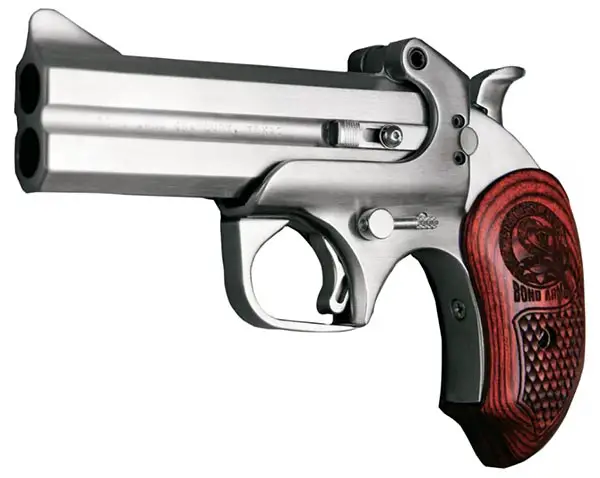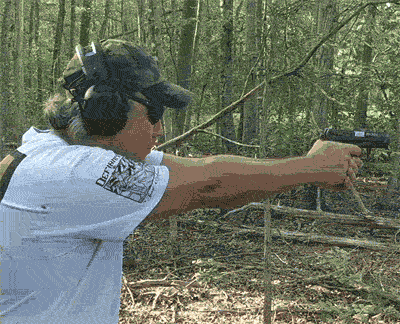Every shooter should be able to identify the type of handgun they are handling. Knowing the type of handgun will give you insight into the cycle of operation. Therefore, you can perform basic functions, such as reloading. But, what are the different types of handguns? Using two different criteria you can identify the three types of handguns.
The first criterion is the cycle of operation. A handgun is either single-shot or repeating. Repeating firearms are broken down into revolvers or automatics.
Thus, the three types of handguns are single shot, revolver, and automatic reloader. Each type of handgun has a distinct chamber construction and/or cycle of operation.
Alternatively, the type of handgun can be categorized by the trigger action. A pistol is either single-action only, double-action only, or double-single action (DA/SA).
Table of Contents
Three Types Of Handguns By Action
Handgun cycle of operation is one criterion to determine the three types of handguns. Handgun construction is a big indication of pistol type. Furthermore, physical features, such as the number of chambers and how to access them, can help you identify the type of handgun.
Break (Hinge) Action Pistols

Break action or hinged action pistols at the first type of handgun. These types of handguns hinge around a single point to expose the chambers. A break-action handgun can have a single barrel or multiple barrels. Pictured above is a deringer model available on Cabela’s.
Additionally, the barrel(s) on these guns can hinge muzzle up or down allowing access to the chamber(s). Exposing the chamber allows casings to be extracted and replacement cartridges to be loaded.
Generally, break-action handguns have a 1:1:1 ratio of chambers to barrels to cartridges. Therefore, it is considered a single shot style handgun. However, some older model revolvers had a break-action rather than a swing out cylinder.
Revolvers
Contrary to their single shot counterparts, revolvers are a type of repeating firearm. Unlike hinge style guns, revolvers have a cylinder containing multiple chambers. Thus, this type of handgun is commonly referred to as a “wheel gun.”
Above is an animation (albeit dated) of the cylinder of a revolver. Because of the design and function, successive shots can be fired without having to open the action. The number of rounds that can be carried in a revolver will vary, depending on the make and model of the handgun.
When reloading a modern revolver, the entire wheel swings out and all chambers can eject spent casings (or live rounds – depending). However, older model revolvers had a loading port; each chamber had to be emptied and reloaded individually.
Automatic Reloaders a.k.a. Automatics

Finally, we come to the third type of handgun — automatic reloaders — more commonly known as automatics. This does NOT mean this type of handgun fires multiple bullets with a single pull of the trigger. An automatic is a type of repeating firearm.
Automatics have a single barrel and chamber. However, an automatic handgun extracts and ejects spent casings with each round fired. Furthermore, a successive round is loaded from the magazine into the chamber during the cycle of operation. Thus, the name “automatic.”
Additionally, the hammer (or striker) is reset to the cocked position with each round fired. An example of the cycle of operation can be found on this page.
Due to the single chamber, extra rounds are stored in the magazine. Unlike revolvers which have multiple chambers each housing a single cartridge. Magazine capacity can vary by make/model options or aftermarket magazines.
Type of Handguns By Trigger Action
I cover trigger types in greater detail in other articles on the site. One article discussing trigger type is my concealed carry practice exam article. Alternatively, you could review my article on how to carry a DA/SA pistol for animated examples. However, below are the basics trigger types to help you identify the three different types of handguns.
Single Action, Double Action, or Both?
A single action only trigger performs only one action. Squeezing the trigger releases the hammer (or striker). Because the trigger does not perform any other action, this types of handgun is referred to as single action only (SAO). A single action only handgun requires the hammer (or striker) to already be completely cocked to fire.
Contrarily, a double action only trigger performs two actions. Squeezing the trigger partially or completely cocks the hammer (or striker) AND also releases it. A handgun is considered double action only (DAO) if the trigger can ONLY perform both actions.
Finally, we have the double-single action (DA/SA) pistols. These handguns are unique in that they are hybrids. A DA/SA pistol has a trigger that can be operated in either double action or single action. This offers the shooter freedom to switch between the two configurations.
Parting Shots
Trigger action and handgun action are not mutually exclusive. For instance, you can have a revolver that is either SAO, DAO, or DA/SA. Similarly, you can have an automatic or a revolver that are both DAO.
Similarly, you can have a break-action pistol that is also a revolver. My point is that there are exceptions regardless of which criteria you use.
Therefore, when defining the “three types of handguns” setting your qualifying criteria is crucially important. Hopefully you are inspired to learn more having read this article. If you found this helpful, please share this article or leave a comment below. Either one of these helps me immensely.









